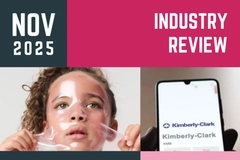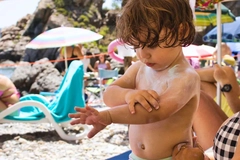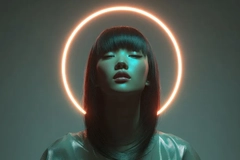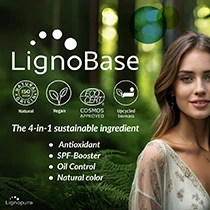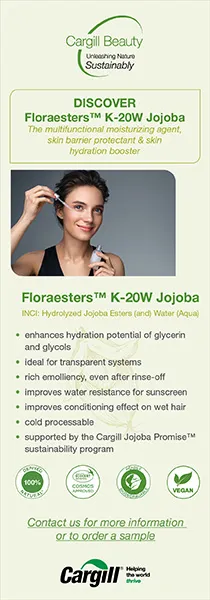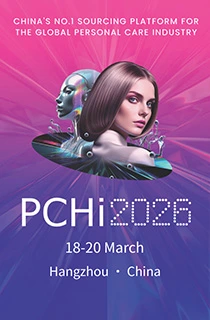L’Oréal’s biotech and eco-solutions “invent the future of beauty,” highlights annual report
18 Aug 2022 --- With its yearly innovative beauty report, L’Oréal is shifting research and innovation to focus on green sciences, tech advancements and augmented beauty. The 2021 report is categorized into five key beauty themes – inclusive, responsible, innovative, tech and performance – revealing how the company is moving toward its goals.
Keeping science at the center of its developments, the industry giant is “inventing the future of beauty” through biotechnologies, nature and the power of the natural world.
In 2021, L’Oréal reported 16.1% like-for-like sales growth, with skincare and sun protection accounting for 40.2% of the business segment. The company also reported a 25.7% growth in e-commerce sales in 2021.
 L’Oréal’s research and innovation is employing green sciences to develop biotechnological formulas as well as circular product packaging.Eco-designed solutions
L’Oréal’s research and innovation is employing green sciences to develop biotechnological formulas as well as circular product packaging.Eco-designed solutions
To meet the increasing consumer demand for environmentally-conscious and natural products, L’Oréal’s research and innovation is employing green sciences to develop biotechnological formulas as well as circular product packaging.
The Volume Million Lashes mascara by L’Oréal Paris is the outcome of an innovative eco-design approach that has optimized the use of renewable, organically sourced raw materials: its formula contains 99% natural ingredients.
After seven years of research in partnership with the University of Ioánnina in Greece, L’Oréal developed the technology dubbed metalblocker, which uses amino acid glycine to inactivate the copper naturally contained within the hair fiber.
The research discovered that copper reacts violently with the oxidizing agent, causing the hair fiber to break, which leads to a less precise color result. This knowledge has been applied in the formula for Metal Detox, a professional range of hair care products that prevent breakage after dyeing.
“In a world undergoing major scientific and technological revolutions in which health and well-being are more important than ever before, L’Oréal’s research was able to capitalize on the advances made in biotechnologies, artificial intelligence (AI) and cognitive sciences to open new frontiers for formulation and invention,” states Barbara Lavernos, deputy CEO, in charge of research, innovation and technology at L’Oréal.
L'Oréal’s Active Cosmetics Division, La Roche-Posay, launched its Lipikar Eczema MED cream: a medical treatment based on microbiome science that combats eczema, a common skin condition among children which manifests as patches of dry, itchy skin.
Apart from the many innovative products launched by L’Oréal over the past year, the 29th edition of Brandstorm, L’Oréal’s innovation competition, saw entries up 28% from the previous year and challenged students worldwide to come up with an innovative idea to reinvent the beauty shopping experience through entertainment, in retail and e-commerce.
Personalization technology L’Oréal is using AI, algorithms and augmented reality (AR) to push the limits of product personalization
L’Oréal is using AI, algorithms and augmented reality (AR) to push the limits of product personalization
L’oreal aims to become the leader in beauty tech. To that extent, the company is using AI, algorithms and augmented reality (AR) to push the limits of product personalization.
“To become the beauty tech leader, the first milestone is a total metamorphosis of our IT infrastructure, systems and organization. We have undertaken a massive modernization of our existing systems with a platform-based approach,” Lavernos says.
Yves Saint Laurent Rouge Sur Mesure powered by Perso is one such example. It is a connected device paired with a dedicated mobile app that allows consumers to create a multitude of fully personalized lipstick shades at home, using a proprietary AR algorithm by ModiFace.
This includes thousands of images of different complexions from the L’Oréal database to make real-time 3D virtual try-ons a reality.
This past year, the report states that 5,000 interactive QR codes were activated on products or at points of sale. Whether it’s generic (linked to a particular reference) or serialized (tied to a single, unique product), the QR codes offer the customers a range of information about the product or provides them access to diagnosis tools, tutorials on how best to use the product, virtual tests and other customer advantages.
Online activations via social media
L’Oréal is reinventing beauty experiences thanks to online activations via social networks and e-commerce platforms and brick-and-mortar stores via “diagnosis” solutions and personalized advice.
Skin Screen by Lancôme, for instance, combines tri-polar light technology with AI-powered algorithms to measure key skin parameters based on a library of 6,000 skin “diagnosis” images, which condense L’Oréal’s expertise in the clinical signs of skin conditions.
L’Oréal developed an AI-powered semantic and quantitative analysis platform for consumer reviews to aggregate all the comments shared on brand websites and distributor platforms.
Dubbed Consumer Loop, the digital dashboard is underpinned by seven custom AI algorithms explicitly designed for the platform and can simultaneously extract product classifications, analyze comment content and erase bias.
Moreover, L’Oréal Luxe developed One retail, a community mobile app developed in partnership with Microsoft for point-of-sale beauty advisors to stay informed of all the beauty tools and connect.
Beauty inclusivity L’Oréal aims to promote inclusivity and cater to diverse range of beauty needs.
L’Oréal aims to promote inclusivity and cater to diverse range of beauty needs.
In a nod to the “diverse range of beauty needs and desires,” the L’Oréal Group set up an Advisory Council on Diversity, Equity & Inclusion in 2021, comprising of 12 outside experts and six L’Oréal senior executives.
Harnessing its knowledge from the global markets that the Group caters to, research and innovation are increasingly adopting formulas and products to create product ranges that are more inclusive of different hair and skin types.
“Curl Manifesto by Kérastase is the fruit of this inclusive philosophy: this year, the professional haircare brand launched a new range of eight hair care products specially designed for curly, very curly and coily hair,” the inclusivity report states.
The consumer brands also showed their support to causes that promote inclusivity, such as fighting street harassment via its Stand Up program, in partnership with the NGO Hollaback!, launching Brave Together, an awareness-raising and training program targeting mental health, and showcasing themes of women’s empowerment and diversity at its fashion show.
Responsible beauty
L’Oréal for the Future, launched in 2020, focuses on streamlining operations within “planetary boundaries” while addressing urgent environmental and social issues.
Between 2005 and 2020, the Group reportedly reduced carbon dioxide emissions at its plants and distribution centers by 81%, increasing production volume by 29%.
The company aims to reach carbon neutrality at all sites by 2025 and reduce greenhouse gas emissions (scopes 1, 2 and 3) by 50% on average per finished product by 2030.
L’Oréal also came together with four other multinational companies to develop an industry-wide rating system to assess the environmental impact of beauty products.
To encourage sustainable consumption, the Group has developed a social and environmental labeling system graded from A to E, enabling consumers to make informed choices.
By Radhika Sikaria

